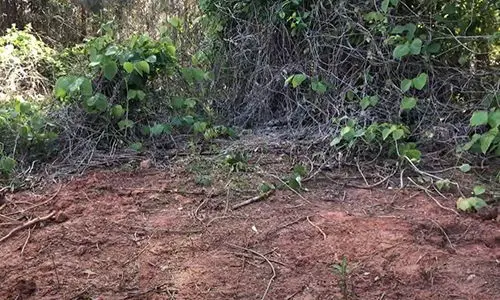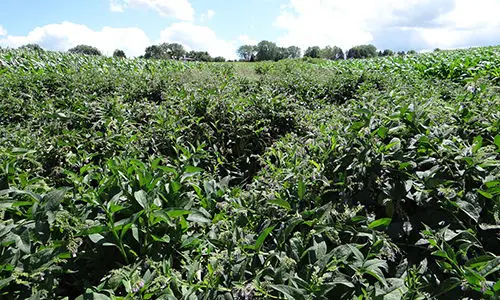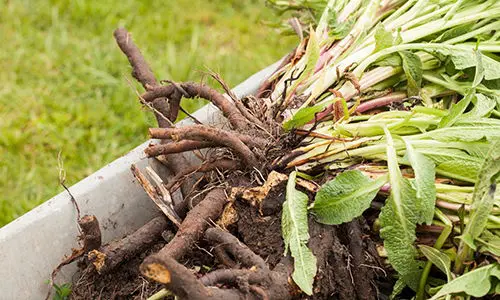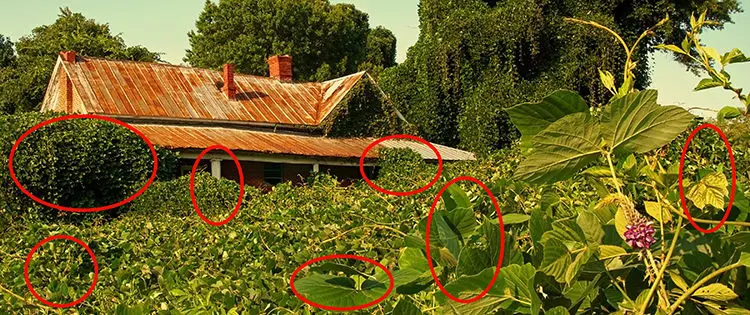Passionate gardeners have a fondness for herbs. Why wouldn’t they?
Having plants and foliage that can be used in various ways is always an attractive plus in any garden. Though, some herbs are incredibly invasive.
What we first assume is a useful and attractive garden addition, turns out to be an uphill battle that we did not sign up for. A wide range of herbs fit in this category, but today we are going to focus on the most popular: Kudzu and Comfrey.
Kudzu
Also known as Japanese or Chinese Arrowroot, Kudzu is native to East Asia, South East Asia, and many of the Pacific islands. Sporting beautiful purple flowers and twisting and turning upwards of two meters in length, Kudzu is a hearty vine that can at times reach up to four hundred pounds! In Eastern medicine, Kudzu root, flower, and leaf have been in use since 200BC and were mainly used to help individuals overcome alcoholism. Today, this invasive herb is used to treat a large range of ailments such as measles, gastritis, and diabetes.
So, now you’re left wondering how this “invasive” herb be so bad if it has so many medicinal uses, and that’s understandable. For all of the good things that Kudzu can bring to help us thrive and heal, this herb is a real killer. Kudzu has a tendency to grow quickly and take over its surroundings. The vines are thick, heavy, and hard to remove.
Kudzu was brought over to the US circa 1876, with the intent to use the vine for ornamental purposes. Many people were fans of the sturdy vines and sweet-smelling blooms and within a short amount of time, this new vine was added to gardens throughout the country. What many gardeners did not expect was the fast pace at which the Kudzu would grow and how it was nearly impossible to keep up with. Kudzu wraps around houses, telephone poles, and sweeps garden beds and trees smothering the life out of the things that were given so much sweat, blood, and precious time to bring into existence.
Kudzu needs very little contact with moist soil to take off. They spread like wildfire through runners, quickly formed rhizomes and vines that root at their nodes. These plants can grow up to one foot per day. The idea of going on vacation for a couple of weeks is sure a frightening thought for those who have this invasive herb in their backyard.

In spite of its heartiness and fast spread, there are ways to combat and suppress the growth of this herb.
The first avenue to combat this herb is regular weeding. Pulling off Kudzu multiple times per week will prevent it from getting out of hand. Of course, this weeding is most efficient for small patches of Kudzu.
The most efficient way of controlling large patches of Kudzu is to allow access to it from grazers, such as goats and cattle. These animals enjoy this plant and their constant munching on the vines will help to weaken and eventually control the plant. For those who are open to the use of pesticides, the vines should be cut as close to the ground as possible and treated with an herbicide. The most effective moment to pursue this option is towards the end of summer when the plants are more susceptible to storing the chemicals in their organs.

Comfrey
Also known as Knitbone or Slippery Root, Comfrey is native to Europe and Asia. It’s characterized by its rough-haired leaves and bell-shaped yellow and blue flowers. Comfrey has a long medicinal history and was introduced to the US for its medicinal purposes. This herb contains high amounts of allantoin, a chemical compound also found in mother’s milk. It is believed that this compound increases the rate of white blood cell growth and is used to heal everything from bronchial issues to broken bones. Comfrey is often recommended to be ingested by both vegans and vegetarians as it is a great source of vitamin B12. This herb is also beneficial to the organic gardener for its excellent source of nitrogen. Comfrey acts as an activator to heat when used in your compost.
This herb can reach up to five feet and thrives in the sun and shade. Comfrey’s roots run incredibly deep (up to two meters) and its root regrowth is fast as lightning. In addition to that, Comfrey self-seeds. In cultivated environments, this herb can quickly spread blocking sunlight and soaking up a majority of the nutrients in the soil, leaving not so many nutrients for other plants and crops to thrive off of.
Just like Kudzu, many gardeners were not, and are still not prepared to keep up with the fast growth of Comfrey and often find themselves struggling to control the herb, or finding a way to eradicate it from the garden altogether.

One of the best ways of stopping the expansion is to dig the plant out of the ground. This, of course, is easier said than done when you have a large overgrowth, but feasible nonetheless. Grabbing every bit of their roots must be achieved in order to keep the herb away.
An easier and very popular method of ridding your garden of unwanted Comfrey is to use organic acids, such as acetic acid and citric acid. Both of these acids are effective at killing the cell membranes resulting in quick wilting Comfrey.
An easy and very accessible recipe for this acetic and citric acid combination is to mix 1 quart of vinegar (12°+) and four ounces of lemon juice. Place this mixture in a spray bottle and over several days, spray the leaves, stems, and roots of the Comfrey. This surely is one of the easiest ways of keeping the spread of Comfrey under control.
Related: 15 Gardening Mistakes You’re Making Right Now

So there we have it.
Almost every good thing has a downside, and that is certainly true for these two invasive herbs. If you choose to introduce these herbs to your garden, be sure that you are ready to put in some extra work!
You may also like:
 How You Can Keep Rodents Out Of Your Garden
How You Can Keep Rodents Out Of Your Garden
The 1-Minute Stretch That Relieves Most Back and Neck Pains (Video)
13 Plants That Thrive In Shade
Boost Your Soil Quality With This Compost
If You See These Eggs In Your Backyard, Burn Them Immediately














